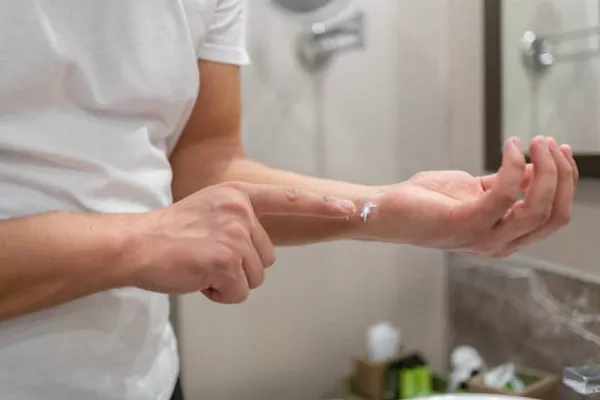Hives, also known as urticaria, are itchy, raised welts on the skin that can be red, pink, or flesh-colored. They can appear suddenly and vary in size from small spots to large blotches. While allergies are a common cause of hives, there are many other potential triggers. In this article, we will explore the various non-allergic causes of hives, their symptoms, diagnosis, and treatment options.
Understanding Hives
What Are Hives?
Hives are a type of skin rash characterized by:
Red or flesh-colored bumps or welts: These can vary in size and can merge to form larger areas.
Itching: The rash is often intensely itchy, causing significant discomfort.
Transient nature: Individual hives usually last less than 24 hours, but new ones can continue to appear.
Types of Hives
Acute Hives: These last less than six weeks and are often triggered by infections, medications, or foods.
Chronic Hives: These last more than six weeks and can persist for months or years. The cause is often unknown, making them more challenging to treat.
6 Non-Allergic Causes of Hives
1. Physical Triggers
Pressure: Extended pressure on the skin, such as from tight clothing or sitting for long periods, can cause pressure hives.
Cold: Exposure to cold air, water, or objects can trigger cold-induced hives.
Heat: High temperatures, hot showers, or exercise can lead to heat-induced hives.
Sunlight: Sun exposure can cause solar urticaria, a type of hives triggered by UV light.
Vibration: Activities that involve vibration, like using power tools, can cause vibratory urticaria.
2. Infections
Viral Infections: Common colds, hepatitis, and mononucleosis can trigger hives.
Bacterial Infections: Strep throat and urinary tract infections (UTIs) are examples.
Parasitic Infections: Conditions like giardiasis can also be a cause.
3. Autoimmune Disorders
Autoimmune conditions can cause the body to mistakenly attack its own tissues, leading to hives. Examples include:
- Lupus
- Thyroid Disease
- Rheumatoid Arthritis
4. Medications
Even if you’re not allergic to a medication, it can still cause hives through other mechanisms:
Non-Steroidal Anti-Inflammatory Drugs (NSAIDs): Such as aspirin and ibuprofen.
Antibiotics: Particularly penicillin and sulfonamides.
Opioids: These pain medications can trigger hives by causing histamine release.
5. Food Intolerances
Some foods can cause hives through intolerance rather than allergies. Common examples include:
Histamine-Rich Foods: Such as aged cheese, wine, and processed meats.
Food Additives: Including preservatives like sulfites and artificial colors.
6. Hormonal Changes
Hormonal fluctuations, particularly in women, can trigger hives. This can occur during:
- Menstrual Cycle
- Pregnancy
- Menopause
- Stress
Emotional stress can trigger or exacerbate hives in some individuals. Stress-induced hives are often chronic and can be challenging to manage.
Diagnosing Non-Allergic Hives
Medical History
A thorough medical history helps identify potential triggers. This includes:
Recent Infections: Viral, bacterial, or parasitic infections.
Medications: Both prescription and over-the-counter.
Diet: Foods and beverages consumed.
Stress Levels: Any recent changes or events causing significant stress.
Physical Triggers: Exposure to cold, heat, pressure, or sunlight.
Physical Examination
A healthcare provider will examine the hives to assess their characteristics and distribution. This can provide clues to potential triggers.
Laboratory Tests
Blood Tests: To check for underlying infections, autoimmune disorders, and thyroid function.
Skin Tests: To rule out allergies if suspected.
Thyroid Function Tests: To check for thyroid-related causes.
Other Diagnostic Procedures
Biopsy: In rare cases, a skin biopsy may be performed to rule out other skin conditions.
Challenge Tests: Controlled exposure to suspected triggers, such as cold or pressure, to observe reactions.
Managing and Treating Non-Allergic Hives
Avoiding Triggers
Identifying and avoiding known triggers is crucial. This may involve:
Wearing Loose Clothing: To avoid pressure-induced hives.
Using Sunscreen: To prevent solar urticaria.
Avoiding Known Irritants: Such as certain foods or medications.
Medications
Antihistamines: These are the first line of treatment to reduce itching and swelling. Non-drowsy options include cetirizine and loratadine.
Corticosteroids: For severe cases, oral corticosteroids like prednisone may be prescribed for short-term use.
H2 Blockers: Medications like ranitidine can be used alongside antihistamines to improve symptom control.
Leukotriene Receptor Antagonists: Medications like montelukast can be used for chronic cases.
Immunosuppressants: In severe, chronic cases, medications like cyclosporine may be necessary.
Natural Remedies and Lifestyle Changes
Cool Compresses: Applying cool compresses can help soothe itching and reduce swelling.
Oatmeal Baths: Colloidal oatmeal baths can provide relief from itching.
Stress Management: Techniques such as yoga, meditation, and deep breathing exercises can help reduce stress-induced hives.
Dietary Adjustments: Avoiding histamine-rich foods and certain food additives can help manage symptoms.
Living with Chronic Hives
Coping Strategies
Education: Understanding your condition and triggers can empower you to manage symptoms effectively.
Support Groups: Joining support groups can provide emotional support and practical advice.
Regular Monitoring: Keeping a symptom diary can help identify patterns and triggers.
Working with Healthcare Providers
Regular Check-Ups: Regular visits to your healthcare provider ensure that your treatment plan is effective and adjust it as needed.
Specialist Referrals: In severe or persistent cases, a referral to a dermatologist or allergist may be necessary.
See Also: 7 Foods That Can Cause Hives
Conclusion
Hives can occur even in the absence of allergies due to a wide range of triggers, including physical factors, infections, autoimmune disorders, medications, food intolerances, hormonal changes, and stress. Understanding these potential causes, along with appropriate diagnosis and management strategies, is essential for effectively controlling hives and maintaining a good quality of life. If you experience persistent or severe hives, consult with a healthcare provider to develop a personalized treatment plan that addresses your specific triggers and symptoms.


